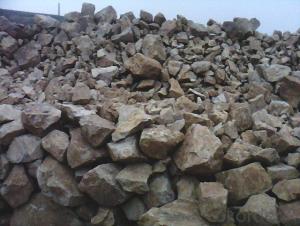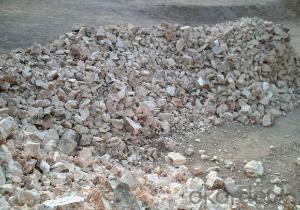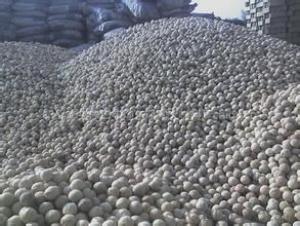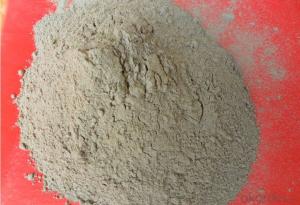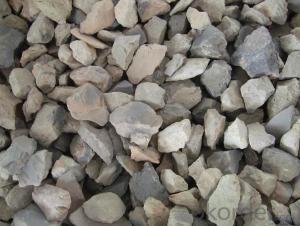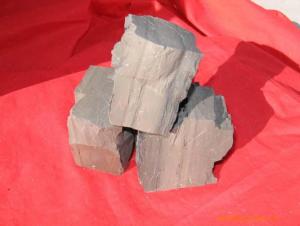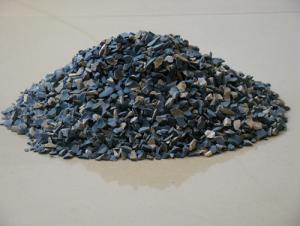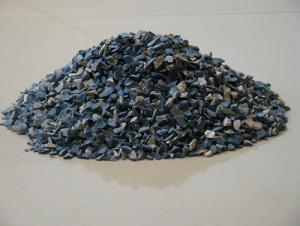FC Bauxite and Sic Base Water-Free Mudgun for Blast Furnace of CNBM in China
- Loading Port:
- Tianjin
- Payment Terms:
- TT OR LC
- Min Order Qty:
- 11 m.t.
- Supply Capability:
- 10000000 m.t./month
OKorder Service Pledge
OKorder Financial Service
You Might Also Like
1.Structure of Calcined Bauxite Description
Bauxite (aluminous soil; Bauxite) is also called the alumina or bauxite, main ingredients are alumina, hydrated alumina containing impurities, is an earthy mineral. White or gray, brown and yellow or light red by iron. From 4 to 3.9 g/cm3 density, hardness, 1 ~ 3 is not transparent, very brittle. Very difficult to melt. Insoluble in water, soluble in sulfuric acid, sodium hydroxide solution. Mainly used for aluminium, refractory material.
2.Main Features of the Calcined Bauxite
Calcined bauxite is one of the principal ore of aluminum. Calcined bauxite contains hydrous aluminum oxides and aluminum
hydroxides, formed through the laterization of aluminous rocks in tropical and subtropical areas .Calcined bauxite is obtained by calcining (heating)superior grade bauxite at high temperature (from 85OC to 1600C) .This removes moisture there. By increasing the alumina content,compared to an alumina content of about 57%to 58% in raw bauxite, calcined bauxite has an alumina content of 84%to88%.The heating is carried out in rotary kilns.
3.Main usage of the Calcined Bauxite
(1) aluminium industry. Used in national defense, aerospace, automotive, electronics, chemical industry, daily necessities, etc.
(2) precision casting. Alumina clinker made after the mould precision casting processed into fine powder. Used in military industry, aerospace, communications, instrumentation, machinery and medical equipment department.
(3) is used for refractory products. High bauxite clinker refractoriness is as high as 1780, chemical stability strong, and good physical properties.
(4) aluminum silicate refractory fiber. With light weight, high temperature resistance, good thermal stability, low thermal conductivity, heat capacity is small and the advantages of resistance to mechanical shock. Used in iron and steel, nonferrous metallurgy, electronics, petroleum, chemical, aerospace, atomic energy, defense and other industries.
(5) in magnesia and bauxite clinker as raw materials, add the appropriate binder, used for pouring ladle whole ladle lining has particularly good effects.
(6) manufacture alumina cement, abrasive materials, ceramic industry and chemical industry can be aluminum of various compound.
4. Calcined Bauxite Images

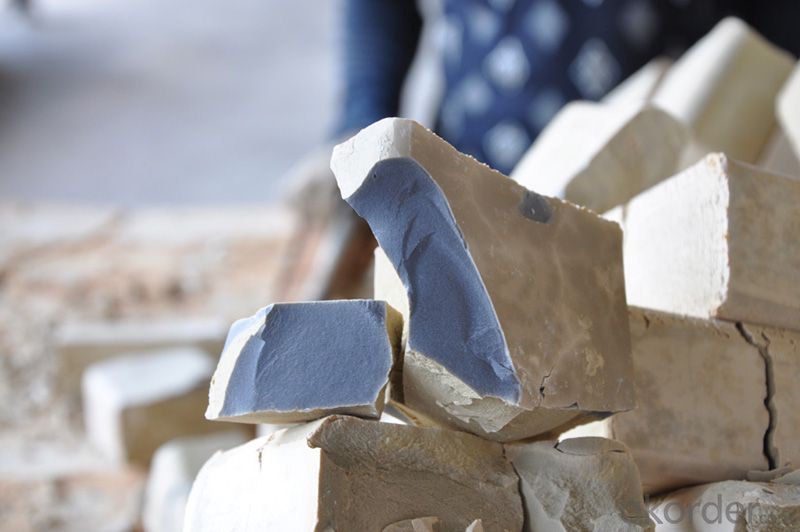
5. Calcined Bauxite Specification
tem | Data | |||||||
Chemical index | Al2O3 | Fixed Carbon | SiC+Si3N4 | H2O | ||||
≥35 | ≥ 12 | ≥ 18 | ≤3.0 | |||||
Physical Index | Refractoriness | Refractoriness under load | Cold Crushing Strength (1350*9h) | Cold Breaking Strength (1350*9h) | AP (1350*9h) | Bulk density (1350*9h) | Marshall value (50Mpa) | |
≥ 1600 | ≥ 1300 | ≥10 | ≥5 | ≥ 27 | ≥175 | 0.6-1.2 | ||
6.FAQ of Calcined Bauxite
1). Q: Are you a factory or trading company?
A: We are a factory.
2). Q: Where is your factory located? How can I visit there?
A: Our factory is located in ShanXi, HeNan, China. You are warmly welcomed to visit us!
3). Q: How can I get some samples?
A: Please connect me for samples
4). Q: Can the price be cheaper?
A: Of course, you will be offered a good discount for big amount.
- Q:How long does it take for refractory cement to solidify?
- 1. First you should be aware of the concepts of condensation and condesation time. Refractory cement belongs unshaped refractories, which when added water or liquid binding agent to mix, the agitation material will gradually lose thixotropy or plasticity and become in a state of solidification, thus is solidified. The time needed to finish the process is called solidification time. The whole process is divided into initial and final set. When beginning to lose plasticity called the initial setting, when called plasticity completely lost the final setting. 2. For refractory cement, the solidification time depends on the matching of the material and the parts and using methods. Under normal circumstances, in order to meet the requirements of time of construction, the initial set time should be no shorter than 40min, and the final set time should be no longer than 8H 3. There are also some exceptions. When refractory cement is used for spraying and injection operation together with other refractory castable, the set time is required as short as possible, sometimes flash set is required to prevent the occurrence of peeling or collapse of the spraying layer.
- Q:How to use fire-resistant soil?
- Clay refractory soil 1, characteristics and uses: Clay refractory brick is a weak acid refractory material, its thermal stability is good, suitable for hot air furnace, all kinds of boiler lining, and flue, smoke room, etc.. 2, product specifications form: standard shape, general, special-shaped and special-shaped brick. Physical and chemical properties of fireclay bricks.
- Q:What's the feature of construction external wall fireproof and thermal inuslation matertial?
- Building external wall fireproof thermal insulation material is made by stirring, casting, foam protecting and cutting with industrial by-product gypsum as the main raw material, adding sulphate aluminium cement, fly-ash, polymer additives and other materials. It has excellent properties of respiratory function , air permeability, water impermeability, recycling system data, wind load resistance, shock resistance, thermal insulation, fireproof and sound insulation.
- Q:What is the the best matching ratio of refractory cement?
- The ratio of cement and sand is about 30 per cent. Properties and Applications of refractory mortar: 1, Good plasticity and easy construction; 2, High bonding strength and strong corrosion resistance; 3, Relatively high refractoriness up to 1650 ℃ ± 50 ℃; 4, Good slag corrosion resistance; 5, Good thermal peeling. Refractory mortar is mainly used in coke ovens, glass furnaces, hot blast furnace and other industrial furnaces. Applied industry: Metallurgy, building materials, machinery, petrochemicals, glass, boiler, electric power, steel, cement, etc. And refractory cement is also known as aluminate cement. Aluminate cement takes bauxite and limestone as raw materials, alumina content of about 50% as the clinker. And it is a hydraulic cementing material made by grinding. Refractory cement is also known as aluminate cement. Aluminate cement is often yellow or brown or gray. The main mineral of aluminate cement is mono calcium aluminate (CaO · Al2O3, abbreviated CA) and other aluminates, and a small amount of dicalcium silicate (2CaO · SiO2), etc. It is a special cement.
- Q:The following statement is correct: artificial corundum has a high melting point and can be used as a high grade refractory material. The main component is silica dioxide
- Artificial corundum has high melting point and can be used as high-grade refractory material. The main component is silica, and the main component is aluminaThe chemist uses agate mortar friction solid reactant without solvent synthesis, the main component of agate is the main silicate is silicon dioxideThe early construction of the Three Gorges dam uses a lot of cement, which is made of silicate materialIn the summer, tourists wear by adding cuprous oxide silica made of glass color glasses to protect eyes [] color glasses is added to the material made of silver, it is now possible to have more advanced material, but the middle school stage is said with silver bromideIt sees light, decomposes easily, and combines easily, so use it.Solar cells can be made of silicon material, and its application is favorable to environmental protection and energy saving
- Q:How can refractory material of the electric furnace be used for longer.
- I do not know if you are referring to super high power arc furnace for steelmaking, if you are, I have a easy solution for I have been doing this work.
- Q:How to understand qualitative and qualitative refractory materials?
- Such as amorphous refractory castable, referred to as bulk loading, cast material, ramming material, refractory clay etc., utensils and other special products. Amorphous refractory material products, refractory heat insulating bricks and experimental and industrial crucible, spraying materials, such as burning bricks, electric melting brick, turn it into required shape and process heat treatment in where it is used.
- Q:Does the external wall thermal insulation materials level b1 need the fire barrier zone?
- First, the cotton fire barrier zone "rock wool board" mainly uses water-repelling rock wool board produced by pendulum method as thermal insulation layer materia, and connecting and fixing base wall by binding and nail bonding, it is composed level A non-combustible building energy efficiency thermal insulation system by plastering layer composed by plastering mortar and glass?fiber mesh and decorative mortar finishing layer or coating. Rock wool board exterior insulation system, low thermal conductivity, good ventilation, combustion performance advantages of higher levels can be used in new construction, expansion, renovation of residential buildings and public buildings energy-saving exterior wall insulation works, including exterior insulation, fire Barrier non-transparent wall insulation and EPS external thermal insulation system. The introduction of main level A fireproofing EIFS on the present market (The following text is selected from China Building Standard Design and Research Institute " external wall thermal insulation building construction" Standard No. 10J121) Second, the foam concrete fire barrier zone 1. It is very green without the release of irritant and harmful gases; no mineral cotton floats do harm to human skin and the respiratory tract; production of?toxic?gases is security level (AQ1), there is no harmful gas and waste emissions and less carbon emissions; it exist not duplicate insulation demolition waste to pollute the environment.
- Q:Refractories for iron-making blast furnace?
- This question is too professional - as far as I know, there are blast furnace noumenon bricklaying - trough slag runner fire-resistant model ~ main channel carbon rod ~ ramming mixes ~ ~ I do not know the specific details.
- Q:Does the refractory material used in steelmaking all refer to refractory brick?
- For example, refractory castable doesn't only refer to refractory brick, but also some bulk material and ramming?mass. Desulfurizer belongs to ferrous metallurgy auxiliary material.
1. Manufacturer Overview |
|
|---|---|
| Location | |
| Year Established | |
| Annual Output Value | |
| Main Markets | |
| Company Certifications | |
2. Manufacturer Certificates |
|
|---|---|
| a) Certification Name | |
| Range | |
| Reference | |
| Validity Period | |
3. Manufacturer Capability |
|
|---|---|
| a)Trade Capacity | |
| Nearest Port | |
| Export Percentage | |
| No.of Employees in Trade Department | |
| Language Spoken: | |
| b)Factory Information | |
| Factory Size: | |
| No. of Production Lines | |
| Contract Manufacturing | |
| Product Price Range | |
Send your message to us
FC Bauxite and Sic Base Water-Free Mudgun for Blast Furnace of CNBM in China
- Loading Port:
- Tianjin
- Payment Terms:
- TT OR LC
- Min Order Qty:
- 11 m.t.
- Supply Capability:
- 10000000 m.t./month
OKorder Service Pledge
OKorder Financial Service
Similar products
New products
Hot products
Related keywords
